Abstract
Patients with duodenal ulcer disease received either a two hour pentagastrin infusion test or a similar test with the addition of a bolus of cimetidine, 200 mg, after one hour of pentagastrin. Pentagastrin induced secretion of acid and histamine, the secretion patterns of the two being similar. Total histamine output in the gastric aspirate in the first hour of pentagastrin infusion was related to total acid output (r = 0.58, p less than 0.01). A similar correlation was observed during the second hour of pentagastrin infusion (r = 0.61, p less than 0.05). Plasma histamine concentration rose to a peak coinciding with maximal acid secretion. After cimetidine blockade, gastric acid fell rapidly but gastric histamine output did not change. Plasma histamine concentration increased further. These results suggest that pentagastrin induced gastric histamine release is not affected by an acid inhibiting dose of cimetidine. Cimetidine caused histamine release into the circulation in both healthy volunteers and patients after total gastrectomy. The rise in plasma histamine concentration, however, was transient. In contrast, during pentagastrin infusion, the plasma histamine concentration remained high. These data support the hypothesis that histamine release induced by pentagastrin is a major stimulant of gastric acid secretion.
Full text
PDF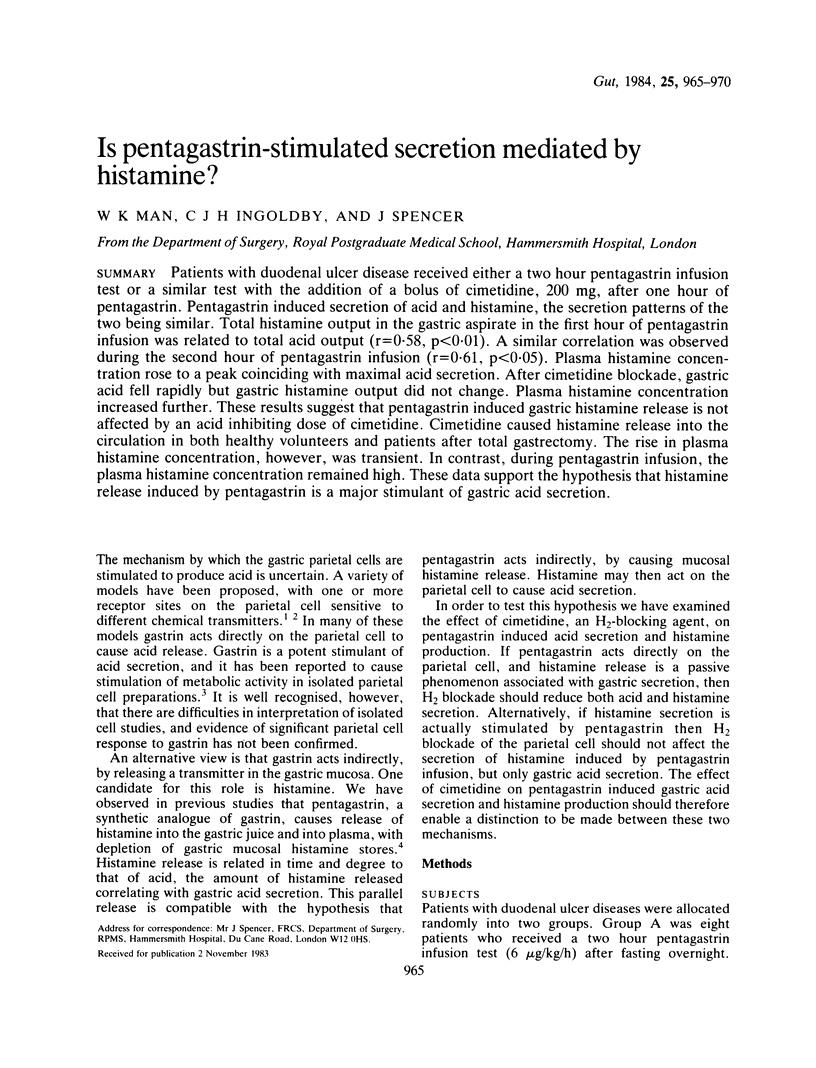
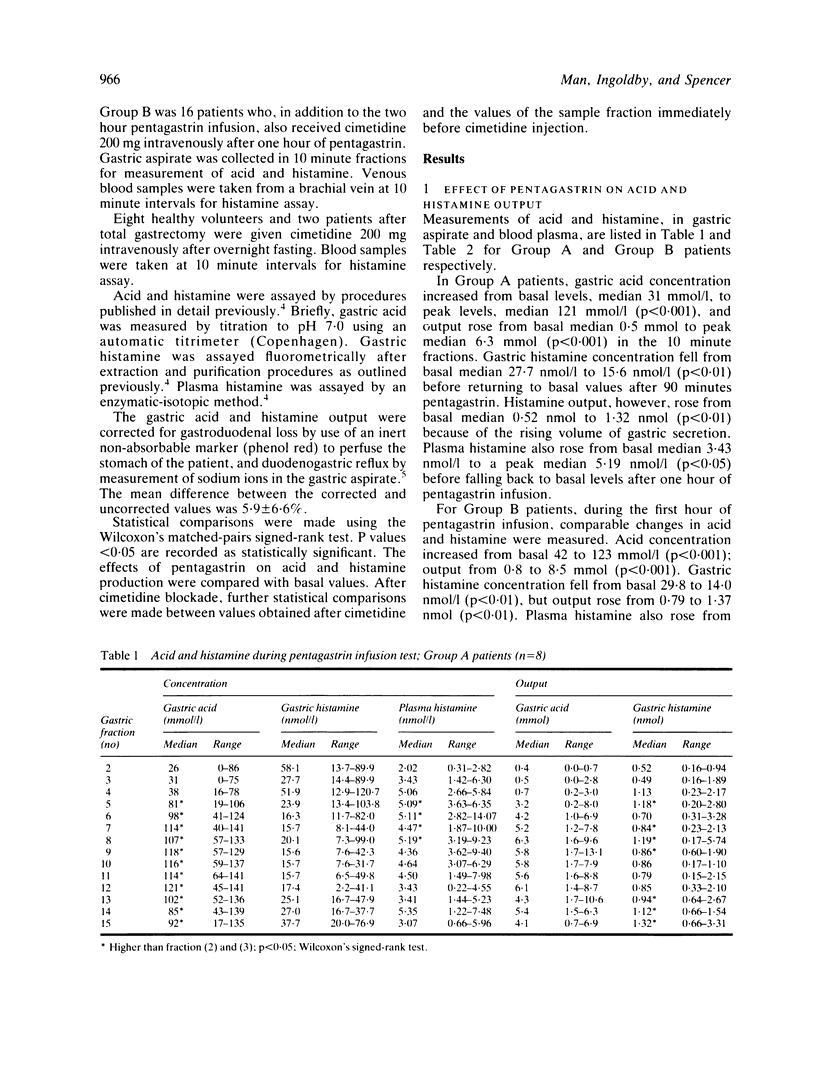
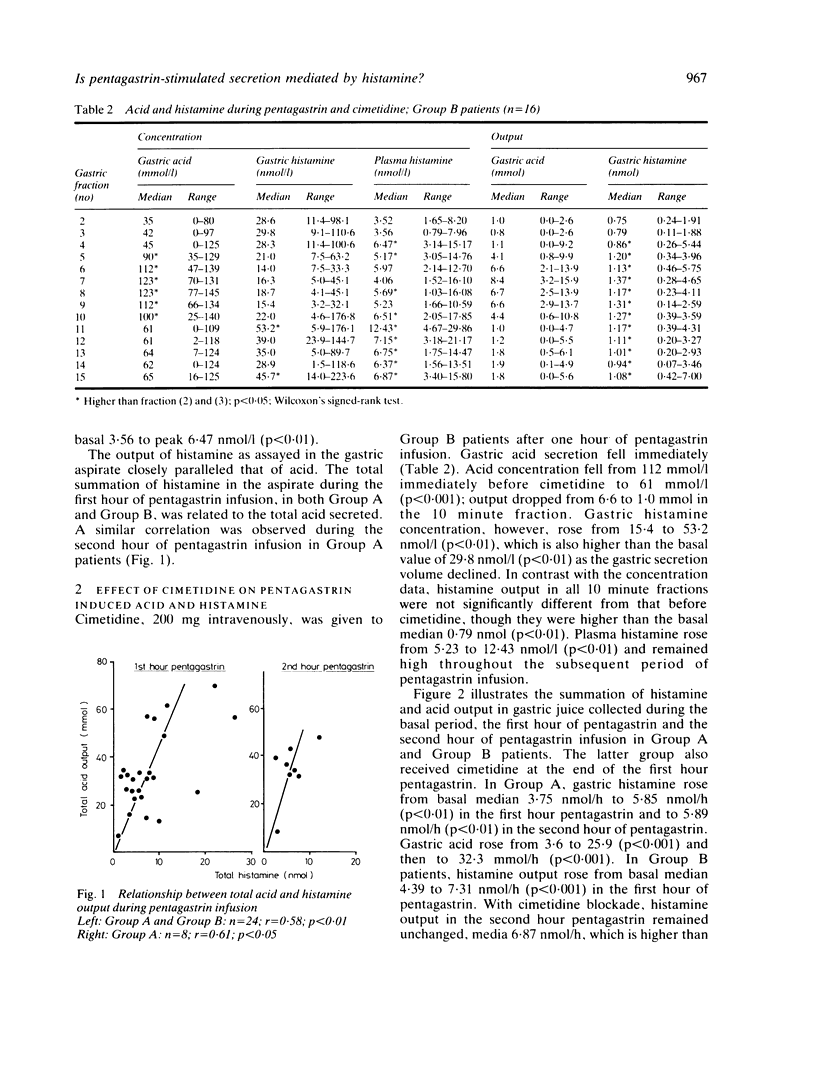
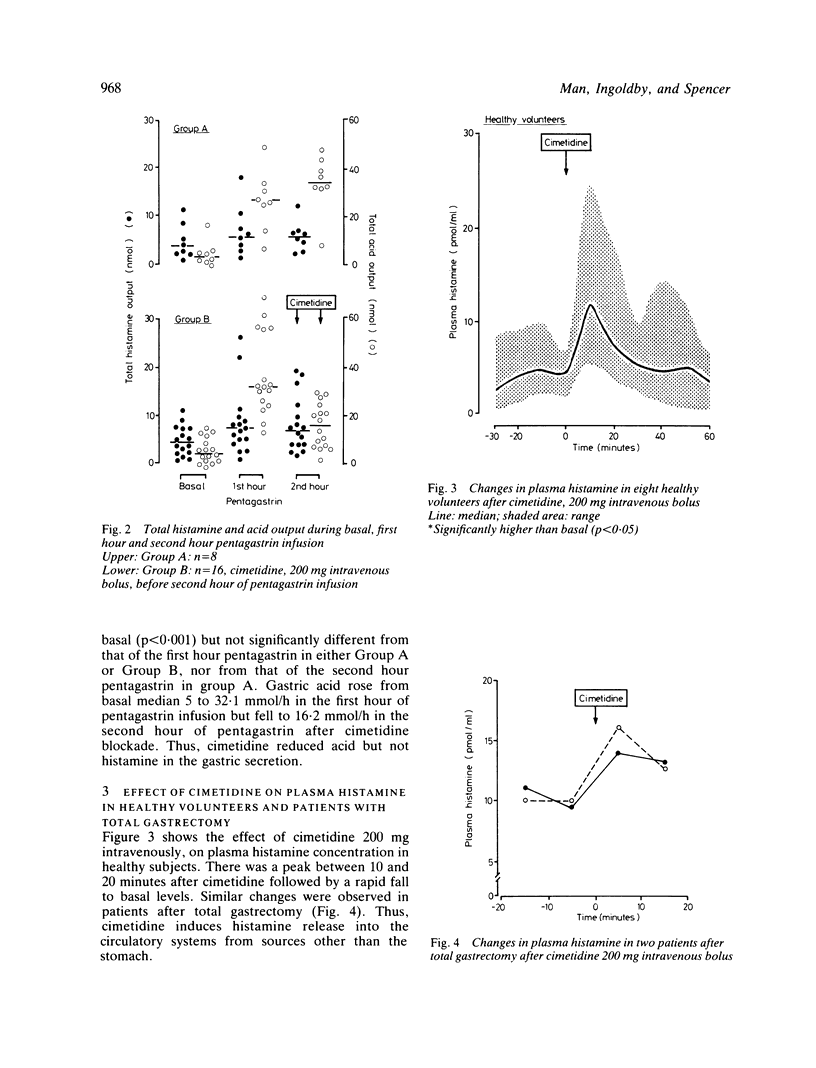
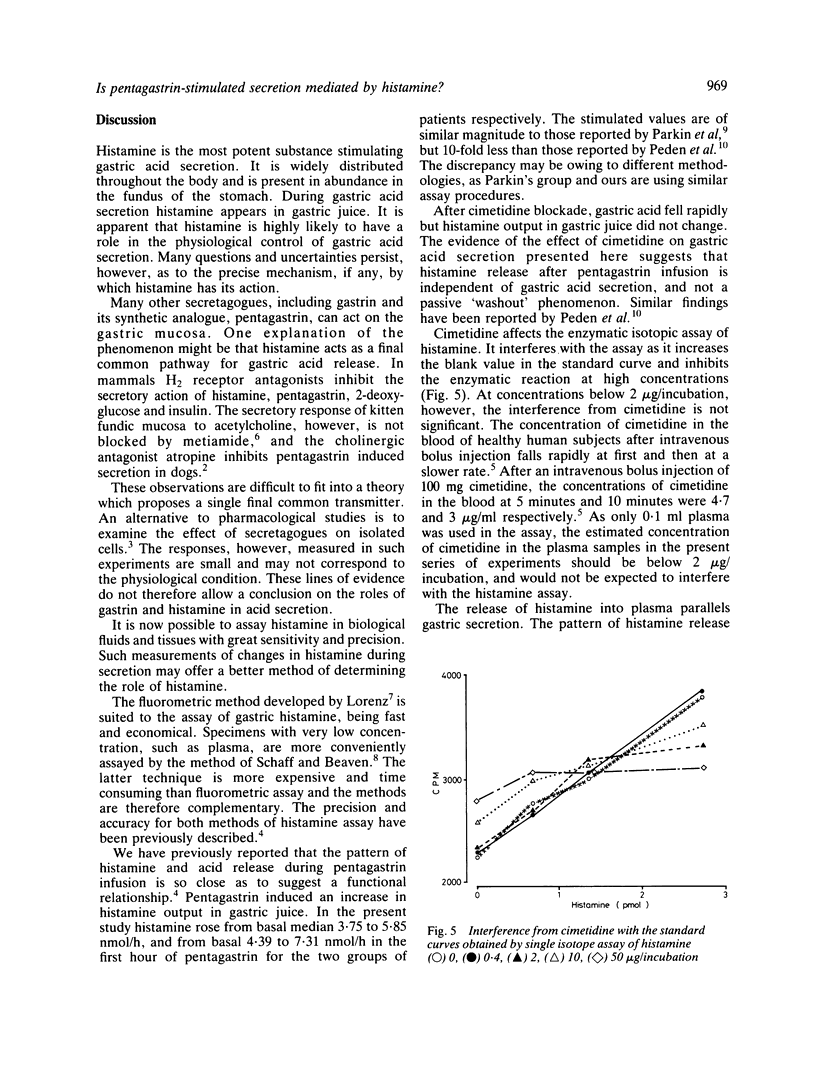
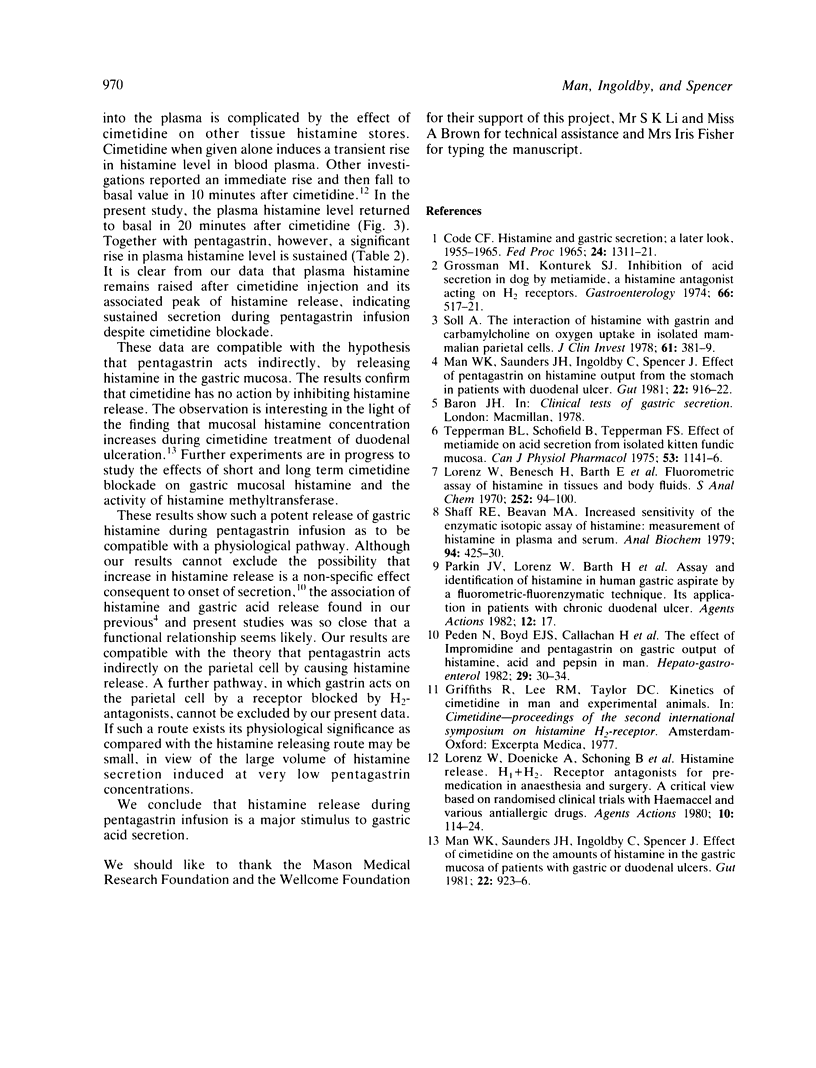
Selected References
These references are in PubMed. This may not be the complete list of references from this article.
- Code C. F. Histamine and gastric secretion: a later look, 1955-1965. Fed Proc. 1965 Nov-Dec;24(6):1311–1321. [PubMed] [Google Scholar]
- Grossman M. I., Konturek S. J. Inhibition of acid secretion in dog by metiamide, a histamine antagonist acting on H2 receptors. Gastroenterology. 1974 Apr;66(4):517–521. [PubMed] [Google Scholar]
- Lorenz W., Doenicke A., Schöning B., Mamorski J., Weber D., Hinterlang E., Schwarz B., Neugebauer E. H1 + H2-receptor antagonists for premedication in anaesthesia and surgery: a critical view based on randomized clinical trials with Haemaccel and various antiallergic drugs. Agents Actions. 1980 Apr;10(1 Pt 2):114–124. doi: 10.1007/BF02024192. [DOI] [PubMed] [Google Scholar]
- Man W. K., Saunders J. H., Ingoldby C., Spencer J. Effect of cimetidine on the amounts of histamine in the gastric mucosa of patients with gastric or duodenal ulcers. Gut. 1981 Nov;22(11):923–926. doi: 10.1136/gut.22.11.923. [DOI] [PMC free article] [PubMed] [Google Scholar]
- Man W. K., Saunders J. H., Ingoldby C., Spencer J. Effect of pentagastrin on histamine output from the stomach in patients with duodenal ulcer. Gut. 1981 Nov;22(11):916–922. doi: 10.1136/gut.22.11.916. [DOI] [PMC free article] [PubMed] [Google Scholar]
- Parkin J. V., Lorenz W., Barth H., Rohde H., Ohmann C., Thon K., Weber D., Crombach M. Assay and identification of histamine in human gastric aspirate by a fluorometric--fluoroenzymatic technique. Its application in patients with chronic duodenal ulcer. Agents Actions. 1982 Apr;12(1-2):17–25. doi: 10.1007/BF01965100. [DOI] [PubMed] [Google Scholar]
- Shaff R. E., Beaven M. A. Increased sensitivity of the enzymatic isotopic assay of histamine: measurement of histamine in plasma and serum. Anal Biochem. 1979 Apr 15;94(2):425–430. doi: 10.1016/0003-2697(79)90385-3. [DOI] [PubMed] [Google Scholar]
- Soll A. H. The interaction of histamine with gastrin and carbamylcholine on oxygen uptake by isolated mammalian parietal cells. J Clin Invest. 1978 Feb;61(2):381–389. doi: 10.1172/JCI108948. [DOI] [PMC free article] [PubMed] [Google Scholar]
- Tepperman B. L., Schofield B., Tepperman F. S. Effect of metiamide on acid secretion from isolated kitten fundic mucosa. Can J Physiol Pharmacol. 1975 Dec;53(6):1141–1146. doi: 10.1139/y75-159. [DOI] [PubMed] [Google Scholar]


